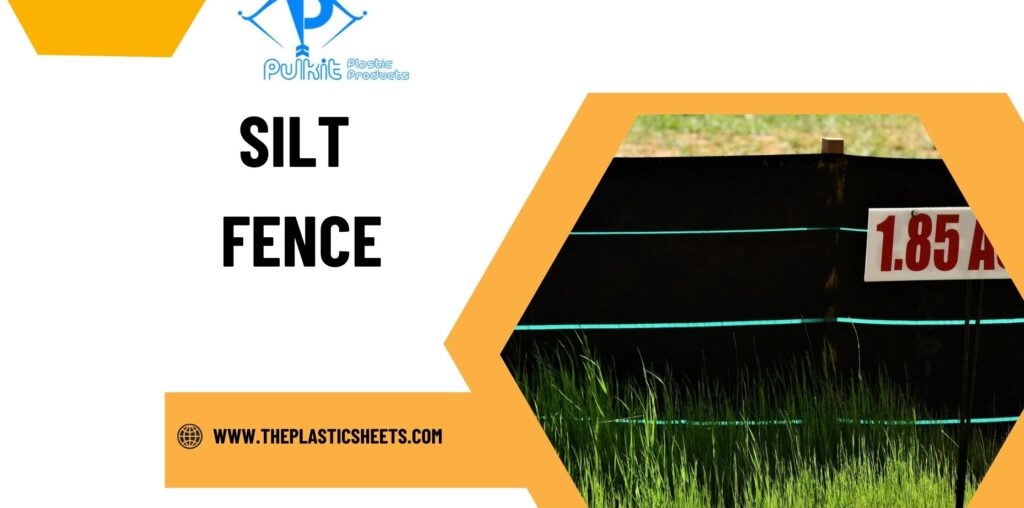In the realm of construction and environmental management, controlling sediment runoff is crucial for maintaining ecological balance and complying with regulations. One of the most effective tools for achieving this is the silt fence.
This article will provide a comprehensive overview of silt fences, Companies like Pulkit Plastic Products specialize in producing durable silt fences designed for effective sediment control. including what they are, their importance, how they work, and why you should consider using them on your next project.
What is a Silt Fence?
A silt fence is a temporary sediment control device made from geotextile fabric that is installed around construction sites, land disturbances, or any area where soil erosion may occur. Its primary purpose is to intercept and retain sediment while allowing water to filter through. Silt fences are typically supported by wooden or metal stakes and are designed to prevent soil particles from leaving the site and contaminating nearby water bodies.
How Do Silt Fences Work?
Silt fences work by creating a barrier that slows down the flow of water, allowing sediment to settle out before it can wash away. When rainwater flows toward the fence, it is impeded by the fabric, which causes the water to pool behind it. As the water slows down, heavier soil particles settle to the bottom, while cleaner water seeps through the fabric. This process effectively reduces the amount of sediment entering storm drains and nearby waterways.
Importance of Silt Fences
1. Erosion Control
Silt fences are essential for controlling erosion on construction sites and disturbed lands. Without proper sediment control measures, heavy rainfall can wash away topsoil, leading to loss of fertile land and increased sedimentation in rivers and streams.
2. Environmental Protection
By preventing sediment from entering waterways, silt fences help protect aquatic habitats from degradation caused by excess nutrients and pollutants. Sediment can carry harmful substances that affect water quality and aquatic life.
3. Regulatory Compliance
Many regions have regulations requiring construction sites to implement erosion and sediment control measures. Using silt fences can help ensure compliance with local environmental laws, avoiding fines and legal issues.
4. Cost-Effectiveness
Implementing silt fences is a relatively low-cost solution compared to other erosion control methods. They are easy to install and maintain, making them an economical choice for construction projects.
Silt Fence Dimensions
When selecting a silt fence for your project, it’s important to consider its dimensions. Standard Silt Fence Dimensions typically include:
- Height: Most silt fences are between 24 inches (0.6 meters) to 36 inches (0.9 meters) tall.
- Length: Silt fences come in rolls that can range from 50 feet (15 meters) to 100 feet (30 meters) long.
- Fabric Weight: The fabric used in silt fences usually weighs between 3 ounces per square yard to 5 ounces per square yard.
These dimensions can vary based on specific project requirements or local regulations.
Choosing a Silt Fence Manufacturer
When looking for a reliable Silt Fence Manufacturer, it’s essential to select one that offers high-quality materials that meet industry standards. Their products are made from UV-resistant geotextile fabric that ensures longevity even under harsh environmental conditions.
Installation of Silt Fences
Step-by-Step Installation Process
- Site Preparation: Identify areas where erosion is likely to occur and mark the locations for your silt fence installation.
- Digging Trenches: Dig a shallow trench along the marked line where the fence will be installed. The trench should be about 6 inches deep.
- Setting Up Stakes: Insert wooden or metal stakes into the ground at regular intervals (typically every 6-8 feet). Ensure that the stakes are driven deep enough to provide stability.
- Attaching Fabric: Unroll the silt fence fabric along the stakes, ensuring that it extends into the trench by at least 6 inches.
- Backfilling: Backfill the trench with soil over the bottom of the fabric to secure it in place.
- Tensioning: Ensure that there is enough tension in the fabric so that it remains upright and functional during rain events.
Maintenance of Silt Fences
Regular maintenance is crucial for ensuring that silt fences remain effective:
- Inspection: Check for any tears or damage after heavy rainfall or storms.
- Cleaning: Remove accumulated sediment behind the fence regularly to maintain its effectiveness.
- Repairing: Replace any damaged sections promptly to prevent erosion from occurring.
Conclusion
Silt fences are an essential tool for managing sediment runoff and protecting our environment during construction projects or land disturbances. By understanding what they are, how they work, and why they are necessary, you can make informed decisions about implementing effective erosion control measures on your site. Choosing quality products from reputable Silt Fence Manufacturers, such as, ensures you have reliable solutions for your sediment control needs. By investing in proper installation and maintenance of silt fences, you contribute significantly to environmental protection while complying with regulatory requirements—ultimately preserving our natural resources for future generations.
Frequently Asked Questions (FAQs)
1. What materials are used in silt fences?
Silt fences are typically made from woven geotextile fabrics that allow water to pass through while trapping sediment particles.
2. How long do silt fences last?
The lifespan of a silt fence depends on environmental conditions but generally ranges from several months up to a year if properly maintained.
3. Can I install a silt fence myself?
Yes, with proper planning and following installation guidelines, most homeowners or contractors can install a silt fence without professional help.
4. When should I use a silt fence?
Silt fences should be used during construction activities, land grading, or any time soil disturbance occurs that could lead to erosion.
5. Are there alternatives to silt fences?
Yes, alternatives include sediment basins, straw bales, or biodegradable erosion control blankets; however, each method has its own advantages depending on specific site conditions.
